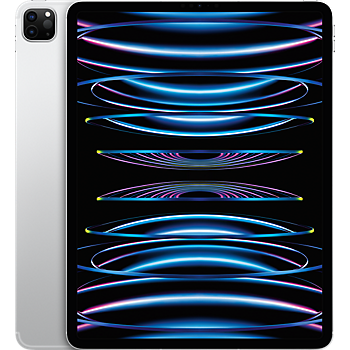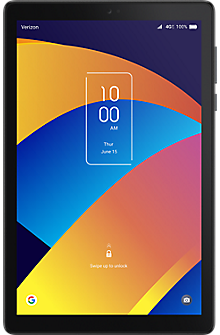What is an iot device
Links related to "what is an iot device"
ThingSpace for IoT Edge Device Development
Mobile edge computing (MEC) can enable automation, engagement and innovation like never before. And Verizon 5G Ultra Wideband is a powerful enabler for edge computing. It delivers the ultrafast speeds, ultra-low latency and flexibility that IoT developers need to design and implement latency-sensitive solutions. And now there's Verizon 5G Edge, a mobile edge computing platform that brings the power of the cloud right into the 5G Ultra Wideband network, to enable the development of large-scale, latency-sensitive applications at the network edge. To fully capitalize on the power of 5G Edge and data-driven technologies like artificial intelligence (AI), augmented reality (AR), virtual reality (VR) and more, you need devices that can keep up. ThingSpace can help. ThingSpace gives developers the tools and resources they need to deploy and manage IoT devices and solutions at the edge. Whether you're an application or IoT device developer, a startup looking to build a connected solution, or an enterprise that manages thousands of devices—ThingSpace by Verizon is the right place to start. Verizon's 4G LTE network covers 99% of the U.S. population, and low-power wide-area (LPWA) technologies, like LTE-M and NB-IoT, can expand coverage even further. Verizon 5G can enable massive IoT (MIoT) capabilities that generate and harness huge amounts of data and support mission-critical services requiring Ultra Reliable, Low Latency Communication (URLLC). The future is 5G Ultra Wideband. With ultrafast speeds and ultralow latency, 5G Ultra Wideband can enable developers to build latency-sensitive applications for mobile end-users and wireless IoT devices. Verizon and your cloud application work hand-in-hand. You can connect your devices to the Verizon network and then leverage our APIs to manage your devices in your cloud application. By default, wireless connectivity data is encrypted, and Verizon has cybersecurity experts dedicated to keeping our network security optimized and up to date. The ThingSpace Ready program, along with the ThingSpace Marketplace and Open Development program, provide you with the tools, resources and support to help you accelerate development of edge devices and get them to market faster. You can upgrade your existing devices with wireless connectivity modules, or start building from scratch with our development kit. Once you have a prototype developed and certified, select an IoT Connectivity plan to get your devices connected to the network. When you're ready to commercialize your solution, you can easily scale to thousands of devices. Take control of your devices via your Cloud Partner application using our powerful set of APIs to connect, diagnose and manage your devices. Get the help you need with implementing, deploying and managing your IoT devices and solutions with our expert support team. Give us a call. Contact a 5G Edge expertThese cookies are necessary for the website to function and cannot be switched off in our systems. They are usually only set in response to actions made by you which amount to a request for services, such as setting your privacy preferences, logging in or filling in forms. You can set your browser to block or alert you about these cookies, but some parts of the site will not then work. These cookies do not store any personally identifiable information. These cookies allow us to count visits and traffic sources so we can measure and improve the performance of our site. They help us to know which pages are the most and least popular and see how visitors move around the site. We use both third party and first party cookies for this purpose. All information these cookies collect is aggregated and therefore anonymous. If you do not allow these cookies we will not know when you have visited our site, and will not be able to monitor its performance. These cookies enable the website to provide enhanced functionality and personalisation. They may be set by us or by third party providers whose services we have added to our pages. If you do not allow these cookies then some or all of these services may not function properly. These cookies may be set through our site by Verizon and third parties. They are used to present Verizon advertising on third party sites that you may visit. They do not store directly personal information, but are based on uniquely identifying your browser and internet device. If you do not allow these cookies, you will experience less targeted advertising from Verizon. BackClear Filters,All Consent AllowedWe use technologies to collect and share information about your use of our site. By continuing, you agree to the use of these capabilities for a better experience and other purposes. Learn more in our .
Learn moreLTE-M & NB-IoT: Powering M2M Solutions for IoT devices
Get the best performance from your IoT devices with technologies specifically engineered to provide the connectivity they need. Narrowband IoT (NB-IoT) and LTE-M are communication technologies that provide low bandwidth, proven and cost-effective connectivity for IoT applications—and are both fully supported by our 4G LTE network. NB-IoT and LTE-M use networking protocols that help improve IoT coverage with better in-building and in-ground penetration. Our LTE technology also provides comprehensive security, with authentication, credentialing and encryption tools to keep your communications protected. ThingSpace is our web-based, open development environment that speeds up IoT deployment. It gives you the tools you need to manage, develop and deploy global enterprise IoT solutions—all in one place. Our business and government customer operations centers give you the support you need to manage all of your IoT devices. These technologies offer low data throughput and high energy efficiency, and help lower the barrier of entry to the IoT world. Built to fit 3GPP standards, these offerings are 5G compatible. NB-IoT and LTE-M offer greater coverage than you'd get with LTE Cat-1. A proven network partner,to deploy a CAT-M1 network in the U.S. LTE network,of Fortune 500 companies do business with Verizon. Learn how Finland-based company HappyOrNot creatively taps an IoT solution to collect instant, actionable customer feedback on the spot. Learn how Verizon can help you make the right choices when designing your IoT strategy. Simplify your IoT operations across the world.
,Adapt in real time, unlock growth and power innovation—all with customizable onsite 5G network connectivity.
,Creating and connecting your IoT device has never been easier. Verizon offers a variety of tools and partners that can help you design and build your concept. NB-IoT complements LTE-M (Cat-M1) so customers have more options to choose from based on their specific application needs. NB-IoT is best suited for low-power, ultralow throughout, delay-tolerant, event-triggered, simple stationary (idle mode mobility) sensors that:,LTE-M(Cat-M1) is designed specifically for purpose-built devices that transmit small to medium amounts of data over wide ranges. The ThingSpace IoT platform enables connectivity management of IoT at scale by allowing you to securely activate on the Verizon network, troubleshoot, locate and manage the life cycle of your IoT devices in our feature-rich platform. Designed for IoT:,Cost-effective:,Better battery life:,Better coverage:,Network:,Call sales,Chat with us,Have us contact you,Already have an account?
Learn moreWhat Are the Types of IoT Sensors?
We've got some great deals going on right now exclusively for our online customers... chat now to hear more! Author: Poornima Apte,Date published: September 25, 2025,Picture a simple home thermostat. When set to a specific temperature, it measures ambient temperature and signals the HVAC systems to heat or cool the house accordingly. IoT sensors function much like the thermostat, but with one key difference: They connect to the internet. Because sensor-embedded devices can relay the data they measure through the Internet, enterprises can develop models to analyze the data and fine-tune operating conditions for hundreds of thousands of systems. Operational efficiencies follow. The potential for IoT and IIoT (IoT's industrial equivalent) is enormous. The will grow at a compounded annual rate of 28.6% from 2021-2026, reaching $29.6 billion, according to research firm MarketsandMarkets. With this huge potential comes IoT applications for nearly all industries. This means that there is an IoT sensor for practically every parameter that enterprises across every industry could possibly need to measure. A few common ones include:,Just like a thermostat, temperature IoT sensors measure fluctuations in heat and relay that information, but they also relay that data through the internet. In agriculture, soil temperature measurements can dictate crop plantation and watering schedules. In manufacturing, measuring temperature profiles of machines can signal when they are about to break down and deliver predictive maintenance. Pressure sensors used in IoT convert varying pressure to a measurable electrical signal. For example, in chemical plants, measuring pressure can help to detect vacuum leaks in equipment. Gas pipelines use pressure sensors to warn of faults in infrastructure. These sensors used in IoT can detect, without contact, when objects come close to the sensor's field or range. Autonomous driving sees implementations of proximity sensors for collision avoidance. These kinds of IoT sensors also find uses in retail where personalized store offers can be pushed through mobile notifications depending on the customer who walks in through the door. Frequently used with proximity sensors, motion detectors help turn systems on and off strategically in building monitoring systems. The rate at which an object is approaching is useful information for central monitoring systems to process. These IoT-enabled sensors can measure acceleration as well as changes to gravity. For example, to detect falls among the elderly IoT-based accelerometers can detect movement associated with waking up, walking as well as falls. These sensors used in IoT measure the amount of water vapor in the air and convert it into a measurable electrical signal. Combined with temperature sensors, these devices can be used extensively in agriculture to verify growing conditions. The combination of temperature and humidity sensors also plays a key role in supply chains and cold chain management. Perishable foods and pharmaceuticals especially benefit from use of such sensors. Sensors used in IoT vary in addition to these. Industries use level sensors (to detect filling of tanks in production, for example), gas sensors for air quality measurements and radar sensors for measuring vehicular distance. The smart cities of the future will drive ahead with such sensors to ease traffic congestion. Industrial implementations of IoT will need not only the sensors but also a way for machine-to-machine communications (M2M) to be relayed to the cloud through a secure, reliable and scalable network. The IoT ecosystem is often complex, and the sampling of data needs to consider device life and communication capabilities. In essence, without network connectivity, you cannot realize the full potential of IoT or work with it in real time. Many businesses that might have ambitious IoT deployment plans find that the rigorous network infrastructure they need can be a real obstacle to a successful implementation. Such businesses may find the inability to scale connectivity infrastructure needs up and down as IoT deployments change especially frustrating. Dynamic applications, such as IoT and AI, need dynamic, scalable platforms to support them—something that is not easily achieved. Network-as-a-Service (NaaS) offers a workaround for such infrastructure challenges. Virtualized services can be scaled up and down quickly, and enterprises only pay for as much as they consume. They do not need to invest in heavy capital expenditures but instead move NaaS to operational expenses. As a result, businesses that need mission-critical IoT sensors but cannot afford the frequently changing hardware and infrastructure needs could consider (NaaS). The pay-as-you-go model ensures that enterprises can scale demand up or down as needs change. Equally important, these services update with the latest hardware, so enterprises can rest assured that the infrastructure they are working with is current and suited to their needs. An additional advantage: NaaS services are frequently monitored for security concerns and stay current with patches. The NaaS model is compelling for businesses that want to realize the promise of IIoT without large upfront investments in necessary network infrastructure, and the talent to manage entire ecosystems. IoT sensors are helping to drive data-driven digital transformation. Learn how can enable enterprises to harvest information at scale and realize operational efficiencies. Call sales,Chat with us,Have us contact you,Get updates,Already have an account?,* Required,The information provided will be used in accordance with our terms set out in our . Please confirm you have read and understood this Notice,Verizon may wish to contact you in the future concerning its products and/or services. If you would like to receive these communications from Verizon, indicate by selecting from the dropdown menu below. Please note that you can unsubscribe or update your preferences at any time. By submitting the form, you are agreeing to receive insights, reports and other information from Verizon and affiliated companies in accordance with our . California residents can view our California Privacy Notice . These cookies are necessary for the website to function and cannot be switched off in our systems. They are usually only set in response to actions made by you which amount to a request for services, such as setting your privacy preferences, logging in or filling in forms. You can set your browser to block or alert you about these cookies, but some parts of the site will not then work. These cookies do not store any personally identifiable information. These cookies allow us to count visits and traffic sources so we can measure and improve the performance of our site. They help us to know which pages are the most and least popular and see how visitors move around the site. We use both third party and first party cookies for this purpose. All information these cookies collect is aggregated and therefore anonymous. If you do not allow these cookies we will not know when you have visited our site, and will not be able to monitor its performance. These cookies enable the website to provide enhanced functionality and personalisation. They may be set by us or by third party providers whose services we have added to our pages. If you do not allow these cookies then some or all of these services may not function properly. These cookies may be set through our site by Verizon and third parties. They are used to present Verizon advertising on third party sites that you may visit. They do not store directly personal information, but are based on uniquely identifying your browser and internet device. If you do not allow these cookies, you will experience less targeted advertising from Verizon. BackClear Filters,All Consent AllowedWe use technologies to collect and share information about your use of our site. By continuing, you agree to the use of these capabilities for a better experience and other purposes. Learn more in our .
Learn moreRelated Devices
Case Studies related to "what is an iot device"
Frazil Transforms Retailer Experience with IoT Solutions Business
Frazil utilized IoT solutions to combine a condition-based monitoring module with Verizon, to stay connected with machines across the United States.
Floorcloud Lays the Groundwork for Construction Innovation with IoT
Learn how Floorcloud used Verizon's Asset Tracking Solutions to innovate how the construction industry mitigates risk, saves money and collaborates.
How HappyOrNot's IoT Solutions Boost Customer Satisfaction Business
Learn how HappyOrNot leveraged Verizon's Cat-M1 IoT solutions to deploy its innovative customer feedback service in the U.S.
Videos related to "what is an iot device"
Verizon: We've got your phone covered with Verizon Mobile Protect Multi-Device
Questions related to "what is an iot device"
Press related to "what is an iot device"
Verizon Business introduces IoT on 5G Nationwide, new suite of Intelligence features
Verizon Business today announced a potent combination of customer-facing network, hardware and intelligence offerings for Internet of Things (IoT) applications across industries
Verizon Business launches IoT Managed Services so customers can focus on growth
Verizon Business, launched IoT Managed Services
Verizon Business ThingSpace IoT Marketplace, a new simple way to manage the IoT journey
Verizon Business today announced the launch of ThingSpace IoT Marketplace
Ashburn, Virginia, United States(based on your internet address)



